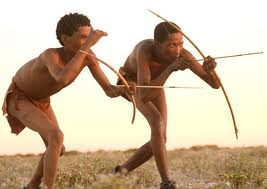
Mali military forces have succeeded in liberating the city of Kidal from terrorist groups where France and its allies and the MINUSMA could not. They succeeded in a few days, where it took years for France and company. On November 14 2023, president Assimi Goïta of Mali announced the liberation of Kidal, stronghold of terrorist groups for the past few years. The news was so stunning that even the BBC who has been calling the Mali government, ‘the junta’ and all sorts of names, and always showing ugly pictures of Assimi Goïta, had to, begrudgingly write the article and for once showed him in a decent image :). When you listen or read the western media, they say that it is thanks to the help of Wagner that the Malian forces freed the town… Malian forces liberated Kidal, that is all that matters! France was there, how many years, and could not defeat them!

This goes without citing the treacherous behavior of the MINUSMA, the UN peacekeeping mission, which weeks before they were set to leave at the request of the Malian government, breached their agreements with the government for a safe handout, and left abruptly leaving all sorts of heavy artillery for the rebel groups to take over the city… I wonder how the MINUSMA must be feeling now?
Joy is overfilling our hearts: it is a first step and we are so proud of our FAMas (Forces Armées Maliennes / Malian Armed Forces)… we are so proud of Mali. We need to stay focused and continue the fight. This shows what we have been saying for years: Africans can govern themselves and are sick and tired of foreign interference and intrusion in our affairs. We all know who the real terrorists are in Mali, they are groups paid by these foreign forces to destabilize the region so as to keep getting free resources. This is a first victory, and there will be many more to come. As Thomas Sankara used to say, “La Patrie ou la mort, nous vaincrons!”
Excerpts below are from AfricaNews.
=====

Mali’s military has seized control of the northern town of Kidal, marking the first time the army has held the Tuareg rebel stronghold in nearly a decade, state broadcaster ORTM reported Tuesday.
“This is a message from the president of the transition to the Malian people,” journalist Ibrahim Traore said in his introduction to the ORTM news bulletin. “Today, our armed and security forces have seized Kidal. Our mission is not over.”
…
Separatist Tuareg rebels in the north have long sought an independent state they call Azawad. In 2012, they dislodged the Malian military from the town, setting into motion a series of events that destabilized the country.
… Amid the chaos, Islamic extremists soon seized control of the major northern towns including Kidal, imposing their strict interpretation of Islamic law known as Shariah.
In 2013, France led a military intervention to oust the extremists from power, but they later regrouped and spent the next decade launching attacks on the Malian military and U.N. peacekeepers.
Another military coup in 2020, led by transition president Col. Assimi Goïta, resulted in deteriorating relations with Mali’s international partners. Mali’s foreign minister ordered the U.N. peacekeeping mission known as MINUSMA to depart, and forces left Kidal at the beginning of November.




